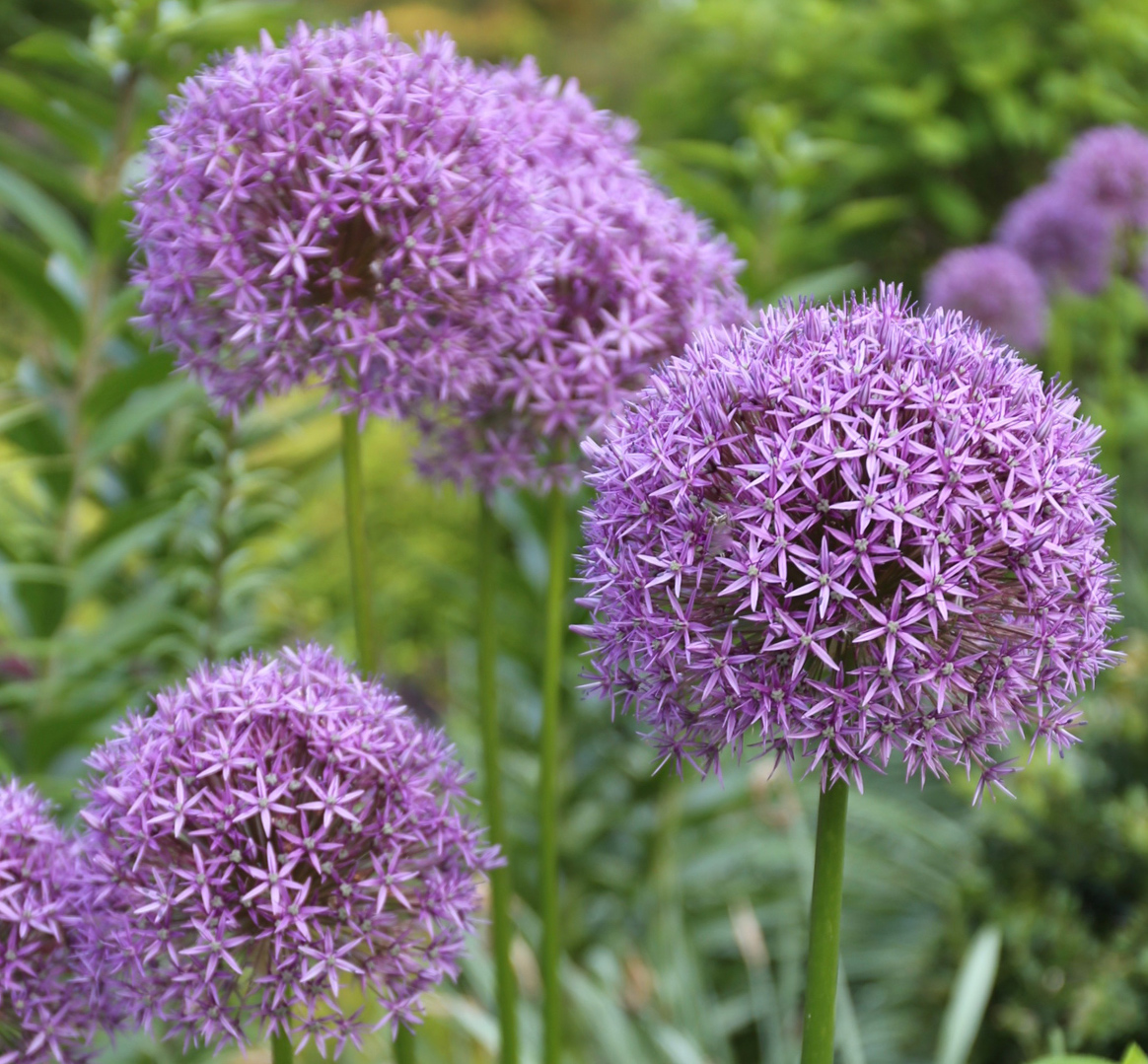
To prevent allium plants from flopping, provide proper support and stake them. As allium plants grow tall and produce large flower heads, their slender stems can sometimes bend or topple, especially in windy or rainy conditions. Inserting stakes or plant supports near the base of the stem and gently tying or securing the stem to the support can help keep the plants upright. It's best to install the stakes or supports early in the growing season to provide adequate support as the plant develops. Additionally, providing a well-balanced fertilizer to promote sturdy growth and avoiding overwatering or waterlogged soil can also help prevent flopping.
 |
Gardening Expert: |
If you can't find what you are looking for on the website then you can ask one of our experts. To get in touch with us Click Here
We will try to get back to you with an answer as soon as we can.
Alliums are a genus of flowering plants that belong to the Amaryllidaceae family. They are native to various regions around the world, including Europe, Asia, and North America. Alliums are well-known for their distinctive globe-shaped flower heads composed of numerous small flowers. These ornamental plants are cherished for their unique and eye-catching appearance.
Alliums exhibit a wide range of species and cultivars, offering diverse flower colours, including shades of purple, pink, white, yellow, and blue. The flower heads can vary in size, from small, compact globes to larger, more dramatic spheres. The foliage of alliums is typically long and slender, emerging from the base of the plant. Some species produce a distinct onion-like odor when crushed, reflecting their close relationship to culinary onions.
Alliums are relatively easy to grow and are known for their hardiness. They prefer well-drained soil with moderate fertility and can tolerate a wide range of soil types. Alliums thrive in full sun to partial shade, although some species can tolerate more shade than others. These plants are typically drought-tolerant once established and require minimal watering. Allium bulbs should be planted in the fall, at a depth that is approximately three times their diameter. They are generally low-maintenance, with minimal pruning or deadheading required.
Alliums are popular choices for ornamental gardens, borders, and flower beds. They add vertical interest and architectural beauty to the landscape. The striking flower heads of alliums can be used as focal points or accents in garden designs. Some varieties also make excellent cut flowers, with their long-lasting blooms adding beauty to floral arrangements.
Alliums can be propagated through division or by planting bulbs. Dividing alliums should be done when the plants are dormant, typically in the fall or early spring. Bulbs can be lifted and divided, ensuring each division has sufficient roots and foliage. Replant the divisions at the appropriate depth and spacing. Maintenance of alliums includes removing faded flower heads to prevent seed formation and encourage energy to be directed back into the bulbs. Alliums are generally not prone to pests or diseases, making them relatively hassle-free plants to care for.
Alliums bring a unique and captivating presence to gardens and landscapes. With their spherical flower heads and elegant foliage, they offer an element of drama and intrigue. Whether planted en masse or as individual specimens, alliums are sure to make a striking statement and add a touch of elegance to any outdoor space.
Did you find this answer useful? Subscribe to our newsletter for gardeing news, projects, special offers and competitions.
The New York Botanical Garden
New York, United States
RHS Garden, Wisley
Woking, United Kingdom
Koishikawa Korakuen Gardens
Tokyo, Japan
Butchart Gardens
British Columbia, Canada
Pamplemousses Botanical Garden
Pamplemousses, Mauritius
Saint Petersburg Botanical Garden
Saint Petersburg, Russia